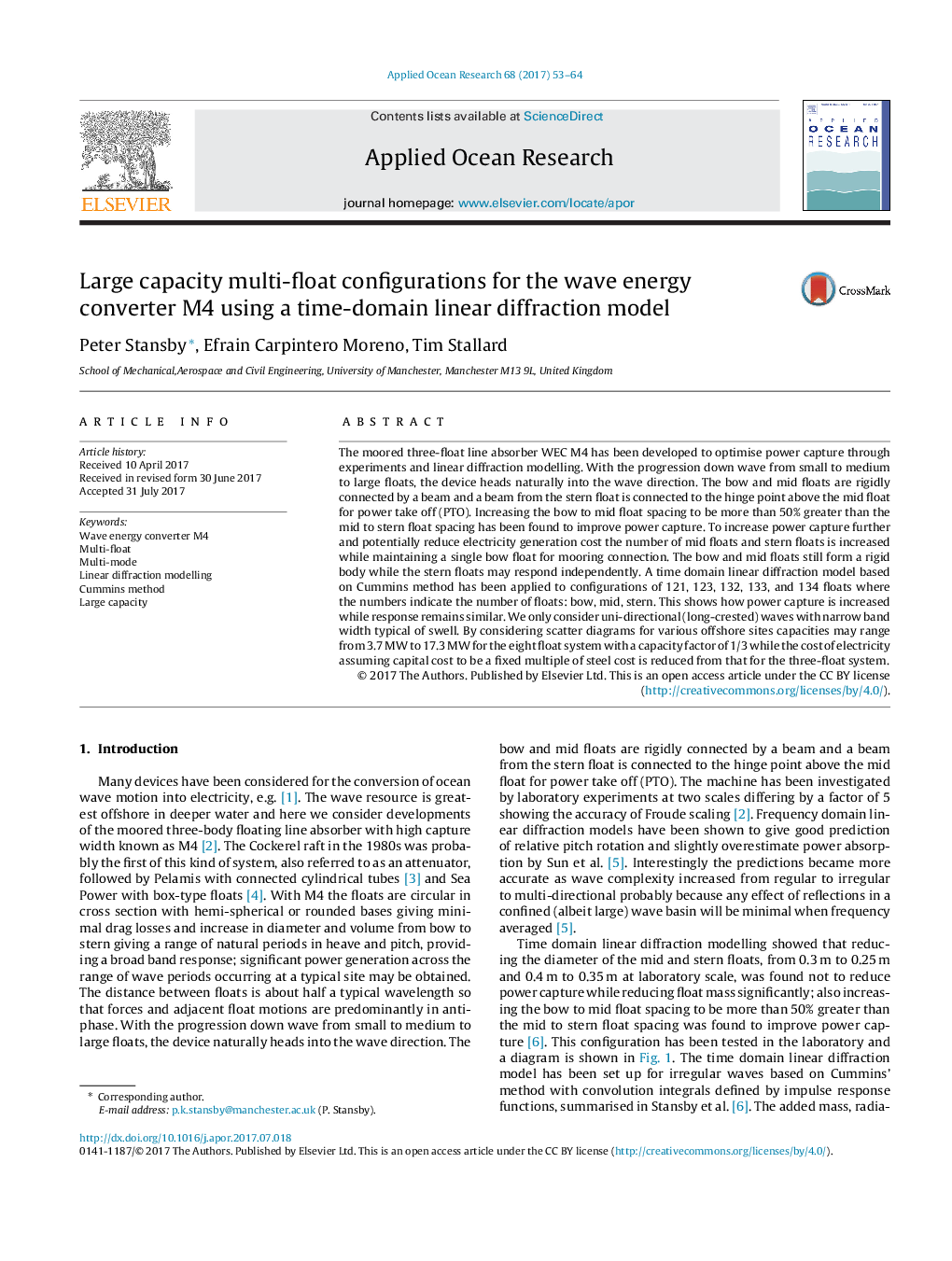| Article ID | Journal | Published Year | Pages | File Type |
|---|---|---|---|---|
| 5473153 | Applied Ocean Research | 2017 | 12 Pages |
Abstract
The moored three-float line absorber WEC M4 has been developed to optimise power capture through experiments and linear diffraction modelling. With the progression down wave from small to medium to large floats, the device heads naturally into the wave direction. The bow and mid floats are rigidly connected by a beam and a beam from the stern float is connected to the hinge point above the mid float for power take off (PTO). Increasing the bow to mid float spacing to be more than 50% greater than the mid to stern float spacing has been found to improve power capture. To increase power capture further and potentially reduce electricity generation cost the number of mid floats and stern floats is increased while maintaining a single bow float for mooring connection. The bow and mid floats still form a rigid body while the stern floats may respond independently. A time domain linear diffraction model based on Cummins method has been applied to configurations of 121, 123, 132, 133, and 134 floats where the numbers indicate the number of floats: bow, mid, stern. This shows how power capture is increased while response remains similar. We only consider uni-directional (long-crested) waves with narrow band width typical of swell. By considering scatter diagrams for various offshore sites capacities may range from 3.7Â MW to 17.3Â MW for the eight float system with a capacity factor of 1/3 while the cost of electricity assuming capital cost to be a fixed multiple of steel cost is reduced from that for the three-float system.
Keywords
Related Topics
Physical Sciences and Engineering
Engineering
Ocean Engineering
Authors
Peter Stansby, Efrain Carpintero Moreno, Tim Stallard,
